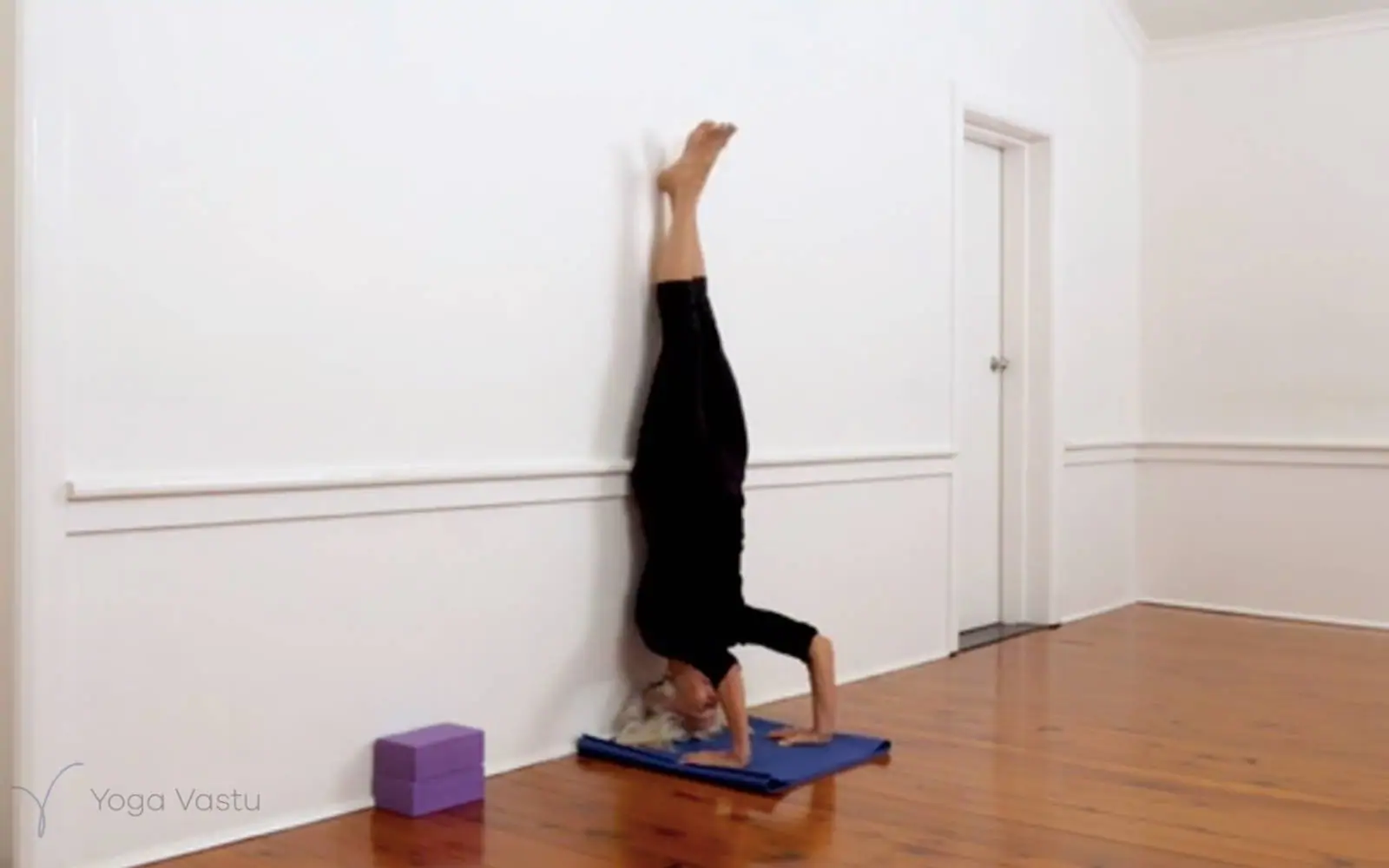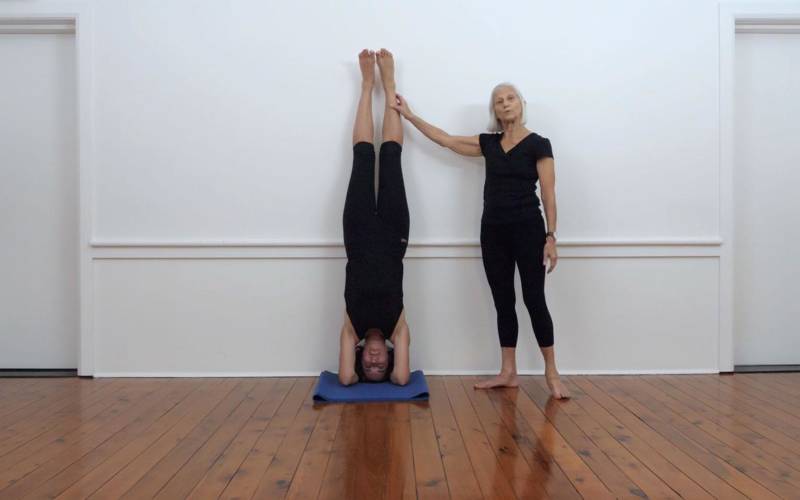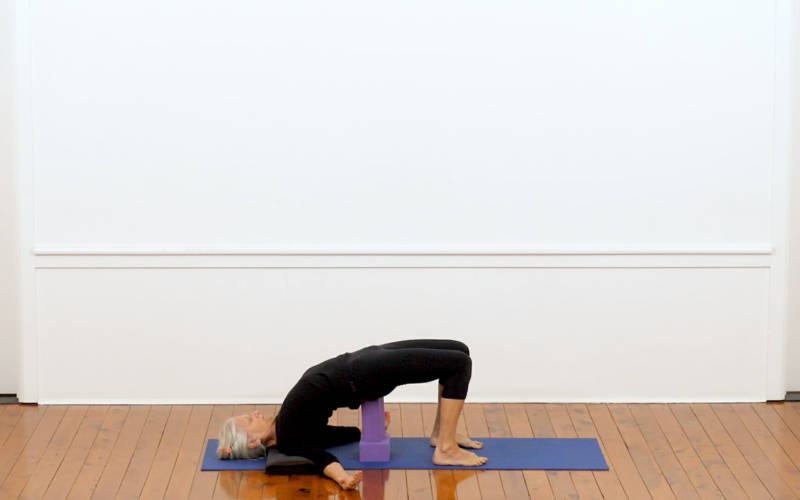How to perform Headstand 2
The same as Salamba Sirsasana 1, except that you support yourself on your hands instead of your forearms. The hands point inward, and the arms are bent with the elbows pointing outward.
What is Salamba Sirsasana II?
Headbalance, or Supported Headstand. This pose is often called “king of the asana”. It is an important pose in Iyengar Yoga practice. Its name is often shortened to Sirsasana. It comes in a few variations.
This is a three-point balance, meaning that your weight is supported by three points, namely your two arms and your head. In the second variation of Sirsasana, you use your hands for support instead of your arms. Your fingers point inward and, as your arms bend, your elbows point in the opposite direction. Salamba Sirsasana II tones your upper arms more intensely than the first variation and it can be seen as more challenging since the extent to which the different points of balance are grounded differs. This variation is also much more typically than not practiced with wall support.
Salamba Sirsasana and its variations are always paired with Shoulderstand (or a pose from the wider Sarvangasana family, such as Setu Bandha) so that the heating and invigorating effects of Headstand can be counteracted with the cooling qualities of Shoulderstand. (Shoulderstand need not be practiced immediately after Headstand, but it should appear somewhere in the sequence after Headstand is taken. Practice Shoulderstand for at least as long as you held Headstand, or even 1.5 or 2 times as long.) Headstand is first learned near the wall, and later practiced freely balancing in the centre of the room.
How to do and when to use Salamba Sirsasana II?
A good foundation in the standing poses and lift strength and opening in the upper arms and shoulders are necessary before learning Headstand. Guidance from a certified teacher is prudent when learning this pose. Stability, confidence, strength, and readiness in the body need to be built progressively. Poses like Adho Mukha Svanasana begin to prepare the body for Headstand. In classical sequencing, Prasarita Padottanasana is often taken immediately before Sirsasana.
Once the pose becomes established in the practitioner, it has a mentally clarifying effect. It is said to sharpen concentration and focus. The blood supply to the whole body is affected, by virtue of the inverted nature of the pose. The tissues of the brain, and important glands like the pituitary, are thought to be benefited by this posture.
Keep in mind that postures from the Sirsasana and Sarvangasana families are to be avoided or approached with extra care if you suffer from chronic dizziness or high blood pressure. If you do indeed suffer from the aforementioned conditions, instead of going straight into any pronounced inversion, prepare yourself mentally and physically. This can be done by assuming milder inversions, such as Setu Bandha Sarvangasana or by performing a forward bend sequence consisting of Paschimottasana, Uttanasana, and Adho Mukha Svanasana. To avoid dizziness after completing the inversion, assume a neutral pose such as Virasana. This will let you ground yourself and reconnect to your breath.



